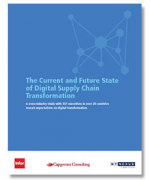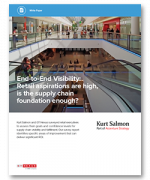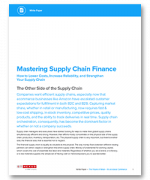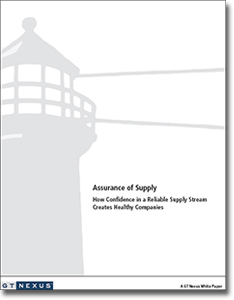Assurance of Supply: How Confidence in a Reliable Supply Stream Creates Healthy Companies
As supply chain networks become larger and more complex, the winners in their markets will be those who customers can rely on the most.
One of the greatest supply chain challenges that companies face today is to reliably and profitably meet global demand.
Outsourced manufacturing, lengthy global supply chains, a large number of suppliers, and volatile demand all create an environment where supply chain decision-makers worry that they can’t deliver on promises they’ve made.
But companies with a strong assurance of supply program have confidence in their ability to fulfill demand. They’re able to make dynamic, data-driven changes in the execution stage to counter disruption and volatility.
These decisions are made possible by cloud-based supply chain technology.
What Used to Work is No Longer Practical
Traditionally, concerns about how to reliably fulfill demand have been left to ERP systems that connect on a one-off basis to systems involved in a company’s supply chain. These fail to paint the entire picture, leaving out crucial data from the many disparate systems involved in a global supply chain. Yesterday’s supply chains were simpler, with most of the data residing within the four walls of the company — and therefore in the company’s ERP software.
Today, a company’s supply chain is dependent on a large number of external partners. Suppliers from various regions ship parts and products globally and they, in turn, source their parts from n-tier suppliers in other regions. Transportation providers, carriers, and 3PLs ship the products across continents to warehouses, stores, or consumers. Financial institutions and third-party agents aid in getting products to final destination and payment. And all of these parties have a one thing in common: a stake in creating a successful supply network.
ERP software can’t turn the external data from multiple partners in a supply chain network into meaningful, real-time information. As a result, enterprises lose control and confidence in their flow of supply. Lead times fluctuate and inventory grows. The spotlight shines on planning, while the real problems lie in the execution.
Better Systems Call for Collaboration
As inventory moves along the supply chain, managers must be able to view points of potential disruption. This starts at the very beginning, with suppliers ensuring materials for production will arrive on time, and ends with the customer paying for the final product. Each point along the supply chain involves different external partners — if all of them have access to a single, updated source of information, they can attain the level of orchestration needed to assure that the flow of supply continues on uninterrupted.
What’s Related




Favorites





